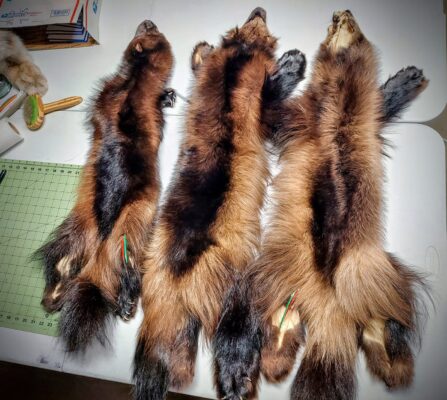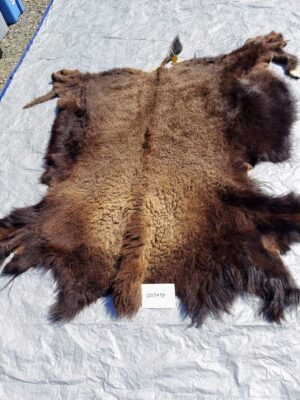Educational
Cased vs. Open Tanned Pelts: What’s the Difference?
Know What You’re Buying — and Why It Matters
Whether you’re a seasoned trapper, a rustic decor enthusiast, or a collector of fine furs, understanding how pelts are prepared is key to making an informed purchase. One of the most common questions we get at Fur and Plush is:
“What’s the difference between cased and open tanned pelts?”
Let’s break it down.
🐾 What are Tanned Pelts?
Before diving into the styles, it helps to know what a tanned pelt is. Tanning is the process of treating an animal hide to preserve it — removing the flesh and fat, softening the leather, and keeping the fur intact for long-term use. A properly tanned pelt is clean, supple, and ready to be displayed, worn, or crafted.
🦊 What Is a Cased Pelt ?
A cased pelt is one that has been skinned from the back legs up to the head, like pulling off a sock. The animal is not cut open down the belly, which preserves the full shape of the hide in a tube-like form.
✅ Key Features of Cased Pelts:
-
No belly incision — fur side is unbroken
-
Typically hung nose-down during drying
-
Common for smaller game like foxes, coyotes, mink, and raccoons
-
Ideal for wall hangers, taxidermy, and full mount displays
-
Often retains the animal’s full body silhouette
🛒 Best Use Cases:
-
Wall-mounted pelts with a natural flow
-
Displaying full-body shape
-
Traditional or rustic aesthetics
-
Historical reenactments, trapper gear, or costume design

💡 Fur & Plush Tip: Most of our fox, lynx, and coyote pelts are cased tanned and come ready to hang — no prep needed.
🐻 What Is an Open Pelt ?
An open pelt is skinned down the belly, like opening a jacket. This method allows the pelt to lie completely flat, showing off the full fur side and the leather underneath.
✅ Key Features of Open Pelts:
-
Belly is split open
-
Lays flat like a blanket or rug
-
Common for larger animals like bears, wolves, beavers, and mountain lions
-
Easier to tan evenly and display fur-side-up
-
Preferred for making garments, rugs, and large wall hangings
🛒 Best Use Cases:
-
Fur rugs
-
Upholstery or garment material
-
Full view of the pelt’s markings and symmetry
-
Craft projects that require cut pieces

🆚 Cased vs. Open: Quick Comparison Table
| Feature | Cased Pelt | Open Pelt |
|---|---|---|
| Skinning Method | From rear to head (tubed) | Split down belly (flat) |
| Best For | Wall display, mounts | Rugs, crafts, flat display |
| Common Species | Fox, coyote, mink, lynx | Bear, beaver, wolf |
| Fur Pattern Display | Profile view | Full fur side visible |
| Leather Exposure | Usually hidden | Fully exposed if desired |
🧼 Tanning Matters Too
Regardless of the form, quality tanning is everything. At Fur and Plush, our pelts — both cased and open — are professionally tanned, soft, and clean, with leather in excellent condition. That means they’re not only beautiful, but also durable for long-term use.
🛍️ Featured Pelts at Fur and Plush
-
[Crystal Fox Pelt – XXL, Cased Tanned]
Stunning dark-silver tones, thick winter fur — perfect as a wall hanger or accent piece. -
[Coyote Pelt – Open Tanned]
Large, full-bodied and ideal for crafting or rustic decor. -
[Beaver Pelt – Open Tanned]
Heavy winter fur, incredibly soft — great for rug use or garment making.
🎯 Final Thoughts
Choosing between cased and open tanned pelts really comes down to how you plan to use or display your fur. Cased pelts show off the animal’s natural shape and make striking wall hangers, while open pelts are ideal for laying flat as rugs or being used in crafts and clothing.
Still unsure which is right for you? Reach out — we’re happy to help you pick the perfect pelt for your collection or project.




